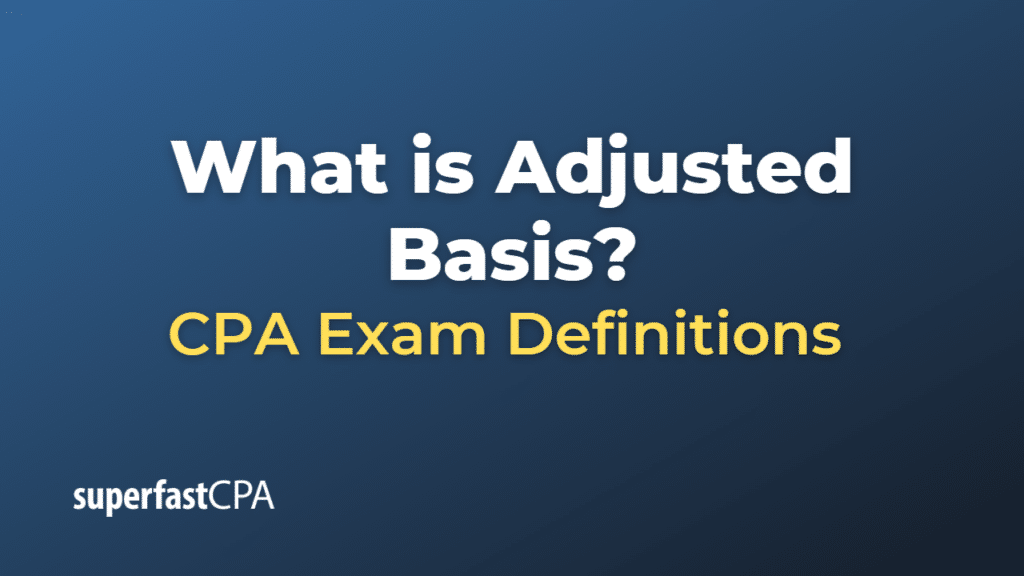Adjusted Basis
Adjusted basis refers to the original cost of an asset, modified for factors such as depreciation, improvements, or other adjustments, over the period of ownership. The adjusted basis is used to determine the taxable gain or loss when an asset is sold or otherwise disposed of.
The adjusted basis is important because it helps establish the amount of taxable income or deductible loss realized from the sale or disposition of an asset. The basic formula to calculate the adjusted basis is as follows:
Adjusted Basis = Original Cost + Capital Improvements – Depreciation – Casualty Losses + Other Adjustments
Here’s a brief explanation of the components:
- Original Cost: The initial price paid for the asset.
- Capital Improvements: Any additions or improvements made to the asset that increase its value or extend its useful life, such as building an extension or upgrading a major system.
- Depreciation: The decrease in the asset’s value due to wear and tear, age, or obsolescence, usually claimed as a tax deduction over the asset’s useful life.
- Casualty Losses: Reduction in the asset’s value due to damage caused by a sudden, unexpected, or unusual event, such as a fire or natural disaster.
- Other Adjustments: Other changes that impact the asset’s basis, such as tax credits, subsidies, or grants.
When you sell or dispose of an asset, you’ll compare the asset’s adjusted basis to the sale price to determine the taxable gain or deductible loss.
Example of an Adjusted Basis
Let’s consider a scenario where you purchase a rental property and make some improvements over time.
- Original Cost: You buy a rental property for $200,000.
- Capital Improvements: Over the years, you make several improvements to the property, including a new roof ($10,000) and a kitchen renovation ($15,000).
- Depreciation: As a rental property, you can claim depreciation on the building (excluding the land value). Assuming the building value is $150,000 and you use a 27.5-year straight-line depreciation method, you would have an annual depreciation expense of $5,454.54. After 5 years, you have accumulated depreciation of $27,272.73.
- Casualty Losses: During your ownership, there were no casualty losses.
Now, let’s calculate the adjusted basis:
Adjusted Basis = Original Cost + Capital Improvements – Depreciation Adjusted Basis = $200,000 + ($10,000 + $15,000) – $27,272.73 Adjusted Basis = $197,727.27
Suppose you sell the property after 5 years for $250,000. To determine the taxable gain, you would compare the sale price to the adjusted basis:
Taxable Gain = Sale Price – Adjusted Basis Taxable Gain = $250,000 – $197,727.27 Taxable Gain = $52,272.73
In this example, you would have a taxable gain of $52,272.73 on the sale of the rental property.













